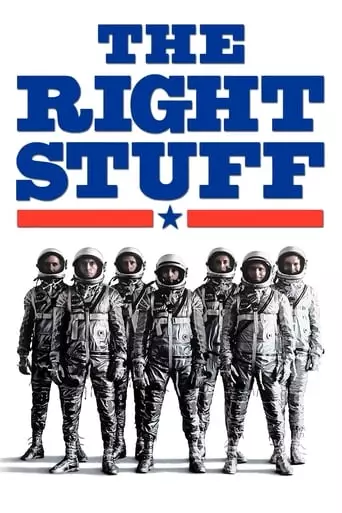
The Right Stuff (1983) Watch Online Free
A chronicle of the original Mercury astronauts in the formation of America’s space program: Alan Shepherd, the first American in space; Gus Grissom, the benighted astronaut for whom nothing works out as planned; John Glenn, the straight-arrow ‘boy scout’ of the bunch who was the first American to orbit the earth; and the remaining pilots: Deke Slayton, Scott Carpenter, Wally Schirra, and Gordon Cooper.
The Right Stuff (1983) directed by Philip Kaufman is a historical drama based on Tom Wolfe’s book, which chronicles the early years of the U.S. space program, focusing on the Mercury Seven astronauts. The story begins with the Cold War race to space, sparked by the Soviet Union’s launch of Sputnik in 1957. This triggers the formation of NASA’s space program, which includes the selection of the first American astronauts.
The film intertwines the journeys of test pilots like Chuck Yeager, who pioneered the breaking of the sound barrier, and the Mercury astronauts, including John Glenn, Alan Shepard, and Gus Grissom, as they go through grueling training and dangerous missions. Yeager’s story, although not directly part of the space program, represents the brave test pilots who laid the groundwork for space exploration. The film contrasts Yeager’s individualistic approach with the collective, publicized nature of the astronauts’ missions, highlighting the shift from personal heroism to a team-driven approach to exploration.
Analysis of Themes
The central theme of The Right Stuff is the exploration of courage, individualism, and the American spirit. It emphasizes the importance of perseverance in the face of danger, as both the astronauts and test pilots confront not only the physical and mental tolls of their missions but also the ever-present risk of death. The movie reflects the national pride tied to the space race, with heroes like John Glenn symbolizing the ideal American figure, while characters like Chuck Yeager represent the rugged individualism that powered the early years of flight.
Another key theme is the evolution of human exploration. In the film, Yeager’s solo flights give way to the team-based space missions, a commentary on how progress often requires both individual initiative and collective effort. The characters face a stark contrast between their personal desires for recognition and the broader mission of national pride, adding layers to their motivations.
The film also explores the impact of technology and the human cost of ambition. With numerous space launches leading to failures, the dangers involved are laid bare, questioning whether the risks are justified for the sake of progress. The emotional costs for the astronauts and their families are highlighted, especially as they are thrust into the limelight of public admiration and media scrutiny.
Impact of the Movie
The Right Stuff had a significant impact on both cinema and the perception of the U.S. space program. Its realistic depiction of the space race and the personalities behind it brought a new level of depth to the history of American space exploration. The movie helped cement the image of astronauts as national heroes, while also portraying the more challenging, less glamorous aspects of their lives.
The film’s success lies in its ability to blend historical events with character-driven storytelling. It humanizes the astronauts and test pilots, showing their vulnerabilities and the psychological strain of their missions. The emotional resonance of the film lingers because it doesn’t just glorify their achievements, but also highlights the personal sacrifices involved.
Watching The Right Stuff will likely leave you feeling a deep sense of awe and admiration for the pioneers of space exploration. You might feel inspired by the immense courage of the astronauts and test pilots, as well as the psychological toll they faced in their pursuit of progress. The film’s depiction of human sacrifice and the teamwork necessary to reach the stars may evoke reflection on the balance between personal ambition and collective achievement. Ultimately, The Right Stuff is a powerful testament to the bravery and tenacity that helped the United States take its first steps into space, leaving you with a renewed sense of respect for those who helped shape history
